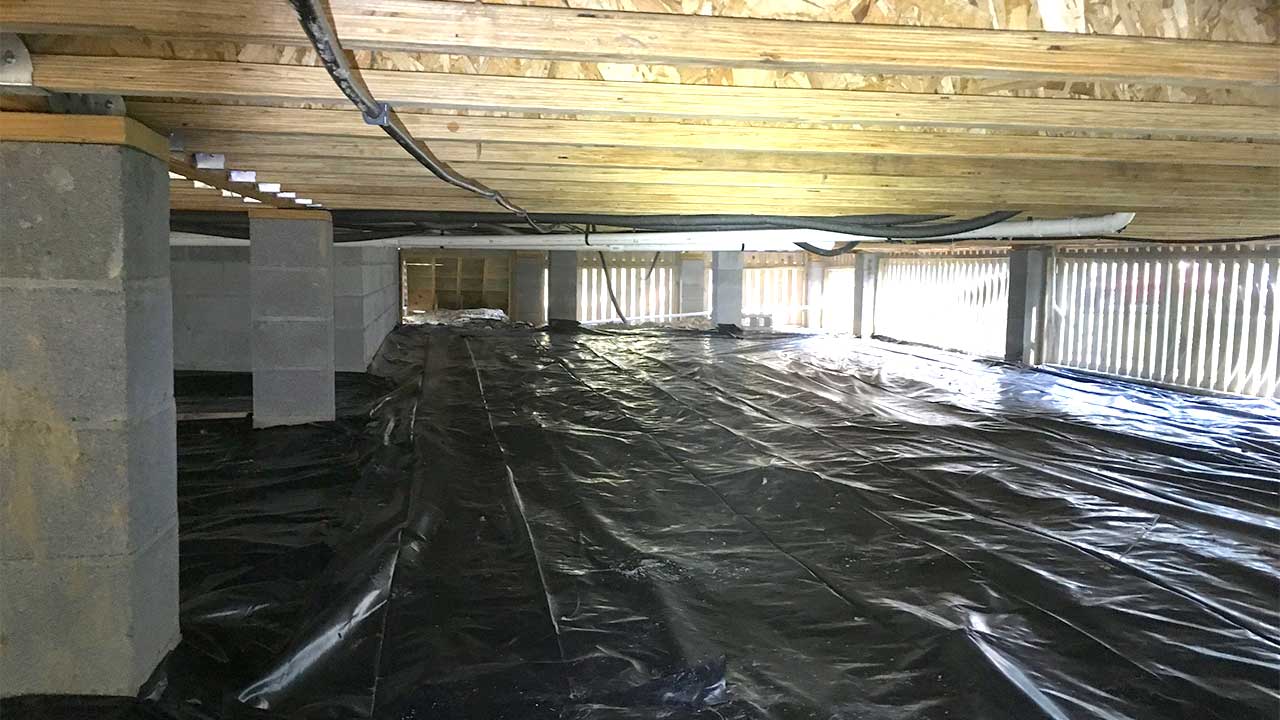I have seen all kinds of varying crawlspaces in my time. Some are immaculate and look clean enough to eat off (kidding of course), while others look like something out of a horror movie. In this article I’m going to explain and describe to you the typical issues that I see in crawlspaces here in the Lowcountry.
A crawlspace, by definition, is a shallow unfinished space beneath the first floor of a building that provides access to plumbing or wiring. Crawlspaces can be vented, un-vented, and encapsulated. Most crawlspaces I see are vented non-encapsulated spaces. These types of crawl spaces are outside of the home building envelope, or the area of conditioned versus unconditioned space. If you have a vented crawlspace it is vital that there is enough ventilation. Ventilation is important because it allows water vapor or rain that may enter to evaporate in an appropriate time frame. Often, especially on older homes, I find that there is not nearly enough ventilation which results in major moisture issues. Moisture in a crawlspace and be detrimental to the building structure, insulation, duct work and HVAC equipment (if applicable).
One question I get a lot is, “Should I insulate the crawlspace?”. I am a big advocate for improving the homes energy efficiency, and one way to do that would be to insulate your crawlspace, if it is done properly. ALL homes have some degree of air infiltration and ex-filtration. If your crawlspace is un-insulated and missing a vapor barrier dirty, smelly, moisture rich air can enter the living space affecting the indoor air quality, increase indoor humidity levels causing moisture or mold problems, and can cause damage to wood flooring.
There are multiple different types of insulation that can be used, but the one we are going to focus on today is what I see most often, fiberglass batt insulation. Fiberglass batt insulation is the least expensive and easiest to install. Anytime I see batt insulation in an existing, older home it generally looks like this.

Poor ventilation and high moisture has nearly destroyed all of this insulation. Water vapor in the air gets trapped in the air pockets of the insulation causing it to increase in weight over time, eventually falling rendering it useless and exposing the sub-floor to the moisture now.
Here are a couple things that can be done to help improve the life of the fiberglass batt insulation and improve its effectiveness.
- Install a Vapor Barrier. (A thin impermeable material, typically plastic polyethylene sheeting.) This is typically installed on the crawlspace floor to prevent or reduce rising water vapor from entering the home through air leakage points and/or damaging the floor structure.
- Provide additional crawlspace ventilation. Performed by a licensed contractor adding additional crawlspace vents may be very easy and relatively inexpensive. As a last resort you could consider adding power vents.
- Monitor the condition of the insulation. If you notice areas of damaged or fallen insulation, consider replacing it with new insulation or simply reinstall it snug up against the floor joists and sub-floor.
These are just a few simple solutions to improve the condition and effectiveness of your crawlspace and help eliminate to possibility of potential mold issues both in the crawl and the home.
If building new and you choose not to install crawlspace insulation, or your existing home does not have insulation currently install, it is my professional opinion that you consider the following.
- Follow the suggestions from items 1 and 2 above.
- Consider air sealing around the joists, sub-floor, duct and plumbing floor penetrations. Air sealing is the idea of reducing the amount of air that enters and exits your home. Its is one of the simplest and least expensive things you can do to help improve the energy efficiency of your home.
If you have any questions or want to send me picture of your crawlspace to get my opinion please do not hesitate to contact me.
Thank you.


